
There are trips you take just to cross a place off a list. Then there are those that truly take you—the ones that strip away your everyday worries, wash your spirit clean, and humble you with the sheer, raw power of nature.
As my jeep rounded that last, heart-stopping curve from Joshimath, the first glimpse of the Badrinath Temple hit me. It wasn’t a modern, towering mega-structure, but a tiny, vibrant splash of color, glowing quietly against the blinding white backdrop of Neelkanth Peak.
The air instantly turned colder, thinner, and somehow impossibly pure. Temple bells chimed across the valley, mixing with the powerful, constant roar of the Alaknanda River. In that moment, I swear I could feel the ancient, wise mountains whispering, “Welcome, bhakt (devotee).”
This is more than just a stop on the famous Char Dham circuit. Badrinath is a primal spiritual magnet, drawing saints, seekers, and tired travelers for centuries. Even whispering the deity’s name brings peace: Om Namo Bhagavate Vasudevaya.
📜 The Sacred Tales: Where Every Stone Has a Story
You can’t just see Badrinath; you have to understand its legends. Every stream, every stone, and every mountain here carries a deep story that turns the site from a simple temple into a sacred, living landscape. These stories unlock the pilgrimage’s deepest meaning.
I. The Badri Tree: Lakshmi’s Sacrifice
The most beautiful legend explains the name: Badri-nath means the “Lord of the Badri (Berry) Forest.”
Long ago, Lord Vishnu chose this freezing spot to perform a deep penance (tapasya) for the good of all creation. The brutal Himalayan winds threatened to break his focus.
Watching her beloved consort suffer, Mata Lakshmi was moved by intense devotion. She instantly transformed herself into a local Badri tree (a wild berry, probably a juniper) and spread her branches and leaves over him, creating a protective, sheltering canopy.
Vishnu was so moved by her selfless that he named the area Badrika Ashram. It’s a gorgeous reminder that true worship often involves a heartfelt act of love and protection.
II. Nar and Narayan: The Twin Peaks
Look up, and you’ll see the majestic mountains flanking the valley: Nar Parvat and Narayan Parvat.
They are believed to be the physical forms of Lord Vishnu’s twin incarnations, Nar and Narayan, who performed severe, centuries-long penance right here. Their austerity sanctified this land forever, marking Badrinath as the original taposthali — a place consecrated by the very highest level of spiritual discipline.
Adi Shankaracharya: The Spiritual Architect
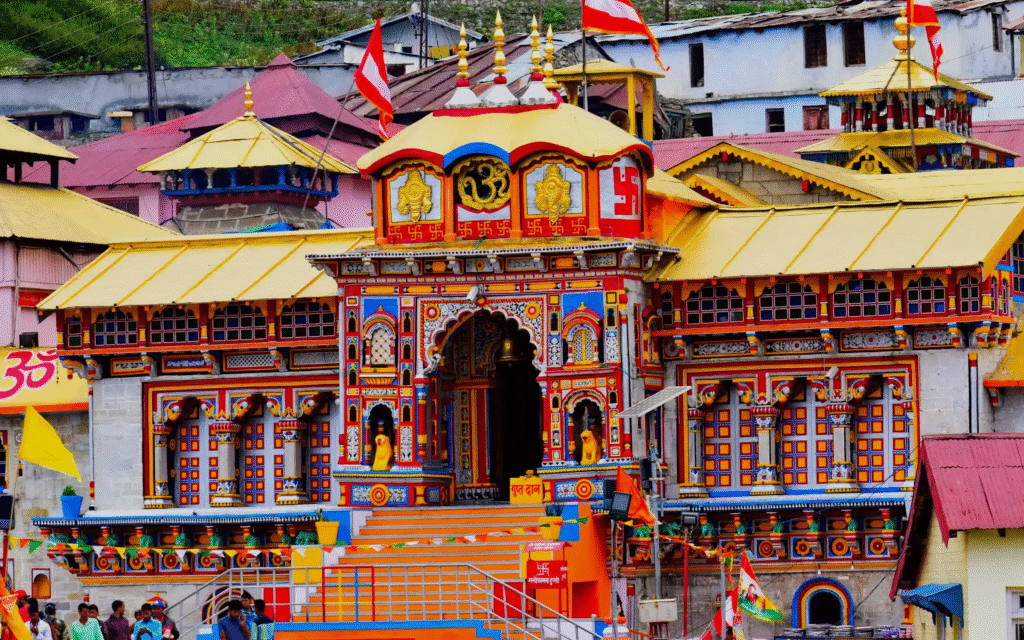
While the valley’s spiritual roots are prehistoric, its existence as the pivotal center of modern Hinduism is directly due to the incredible 8th-century philosopher-saint, Adi Shankaracharya.
At a time when various sects were creating division, Shankaracharya set out to unite Hindu thought under Advaita Vedanta (non-dualism).
The Rediscovery of the Shaligram Idol
Legend says a divine vision guided Shankaracharya to Badrinath. He is credited with fishing the sacred Shaligram idol of Lord Vishnu out of the freezing waters of the Narada Kund (a sacred thermal spring).
The idol had been hidden or thrown into the Alaknanda River years before.
He enshrined it first in a cave near the Tapt Kund hot springs, single-handedly reigniting Badrinath’s spiritual flame. Later, the King of Garhwal moved the murti (idol) to the current temple structure.
The Four Mathas
Shankaracharya didn’t just rebuild a temple; he created a national spiritual map.
He founded four major monastic centers (Mathas) across India to cement the unity of faith, with Jyotirmath (Joshimath) in the North linked to Badrinath.
By placing Badrinath as the Northern Pillar of this network, he ensured pilgrims from every corner of India would consider the journey essential.
The Temple: Architecture and the Yogi Lord
The Badrinarayan Temple itself sits at a staggering altitude of about 3,133 meters (10,279 ft).
Its architecture is a fascinating mix of regional styles, with a brightly colored conical roof that looks a little like a Buddhist monastery (vihara), reflecting the area’s cross-cultural history.
The Idol of Badri Vishal
The center of everything is the one-meter-tall black Shaligram idol of Lord Vishnu as Badrinarayan.
The Daily Rhythm
The day is structured around ancient Vedic rituals, performed by the head priest, the Rawal (who, continuing Shankaracharya’s legacy, is traditionally a Nambudiri Brahmin from Kerala):
Mahabhishek (4:30 AM): The day starts with the sacred bathing of the deity. A beautiful ritual involves removing the Ghrit Kambal (a thick blanket of ghee) that covers the deity throughout the cold night before the doors open for darshan.
Aarti at 8:30 PM: The powerful resonant chants fill the cold valley with overwhelming peace.
Neelkanth Peak: The Garhwal Queen
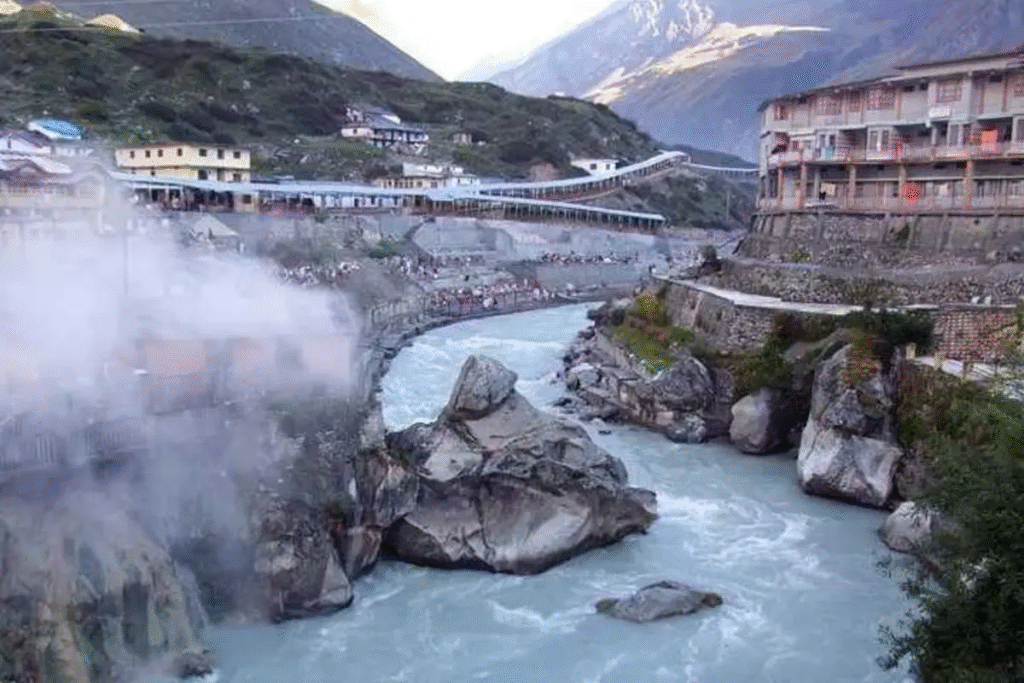
The view is completely dominated by the magnificent Neelkanth Peak, affectionately known as the “Garhwal Queen.”
Rising over 6,500 meters, this permanent, snow-capped giant provides the perfect, serene backdrop to the temple, looking golden at sunrise and silvery under the moon.
Tapt Kund: The Gift of Fire
Just below the temple is the Tapt Kund — an incredible natural thermal hot spring.
Seasons
Opening (Kapat Opening): Happens around late April or early May (Akshaya Tritiya).
Closing (Kapat Closing): Happens around November (on or after Bhai Dooj).
Winter Abode: For those six cold months, the deity’s idol is symbolically moved to the Narsimha Temple in Joshimath, which becomes the temporary seat of worship.
and if you want to a help hand during you tour there are many travelling companies like The Mountain Trekker who take care of everything, from travel to food and stay etc.
Beyond the Temple: Where the Mahabharata Lives
Vyas Gufa (Cave): Where Sage Vyas is said to have written the Mahabharata.
Ganesh Gufa (Cave): Right next door, where Lord Ganesha supposedly transcribed the epic as Vyas dictated it.
Bhim Pul: A massive natural rock bridge over the fierce Saraswati River. Legend says one of the Pandava brothers, Bhima, placed this single slab to help his wife Draupadi cross the river on their way to Swargarohini. The river disappears underground here!
Brahma Kapal: Ancestral Peace
A short walk from the temple. This is the highly revered platform where Shraddha and Pind Daan is performed
Vasudhara Falls
A spectacular, multi-tiered waterfall (a 9 km trek from Mana).
The beautiful local legend claims the water will only fall upon the pure-hearted — a wonderful incentive for self-reflection on the trek.
The Road to Badrinath: Practical Travel Notes
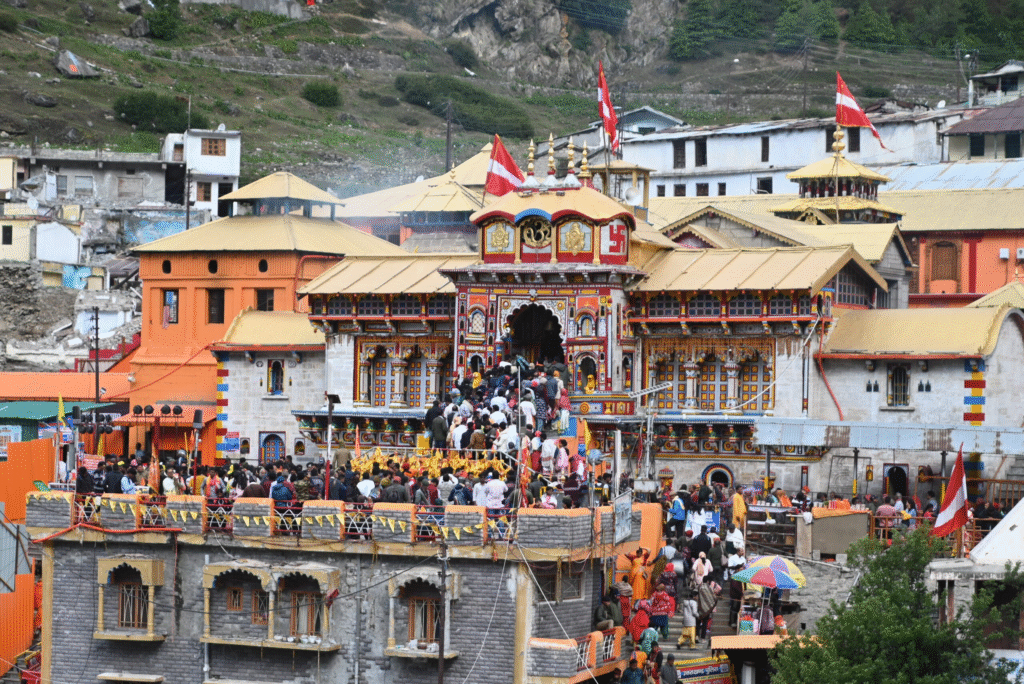
By Train Rishikesh or Haridwar ~295 km / ~320 km Closest major railheads. Buses and jeeps leave constantly for the hills.
By Road Haridwar/Rishikesh to Badrinath ~10–12 hours The route is part of the pilgrimage, passing through sacred river confluences (Prayags): Devprayag, Rudraprayag, and Karnaprayag.
Essential Journey Tips
Clothing: The weather is brutal and unpredictable. Thermals, heavy woolens, gloves, caps, and a windproof jacket are absolutely non-negotiable.
Altitude Sickness: Badrinath is high. Pace yourself, take mandatory short breaks, and consider carrying altitude sickness tablets (like Diamox).
Senior Citizens: The roads are challenging.
If you loved reading about this blog you might also like, Kedarnath Blog.

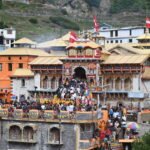
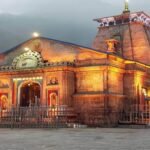
Leave a Reply